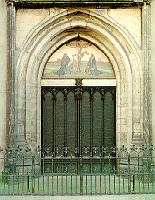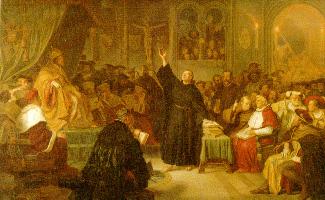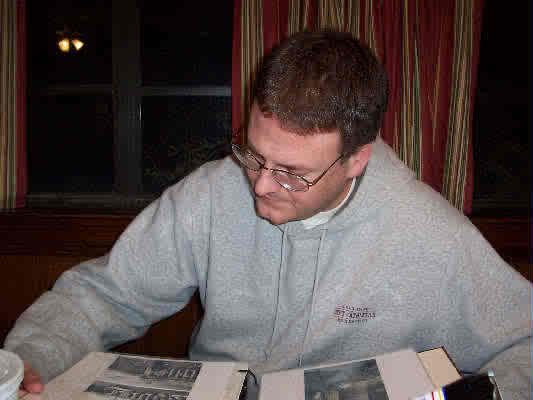Today is Reformation Day
 On October 31, 1517, Martin Luther nailed his 95 Theses on the doors of the Cathedral of Wittenberg, Germany. While this was a common practice for scholars and clergy to nail disputations to the Church door, what made Luther’s act so different can be attributed to two important factors.
On October 31, 1517, Martin Luther nailed his 95 Theses on the doors of the Cathedral of Wittenberg, Germany. While this was a common practice for scholars and clergy to nail disputations to the Church door, what made Luther’s act so different can be attributed to two important factors.First, the topic of the 95 Theses became quite controversial.
Second, several students of Luther’s took the 95 Theses off the Church door and had them translated from Latin into German (most all documents and disputations nailed to the Church doors were in written in the scholars language – Latin – and not the common vernacular) and then distrubuted them among the people. So everyone was able to read them and not just the scholars.
The practice of nailing disputations to the Cathedral door was quite common. This act was actually a way of formulating debate about issues, sending out notices regarding issues and theological doctrines, and simply allowing the scholars and clergy to communicate with one another (a type of midieval 'blogging' or 'e-mailing' if you will). So it was not unusual for Luther to actually nail his 95 Theses to the Church door.

(Above is the Cathedral Doors at Wittenberg Today)
The content of Luther’s 95 Theses was the practice of indulgences and the problems of doing so. However, this one act and this single disputation (the 95 Theses) set in motion a series of events that would change the course of history (especially Church history) altogether. Aside from the 95 Theses, Luther continued to write, as time progressed, about serious issues and problems which he thought the Roman Catholic Church needed to reform. These other works, along with the 95 Theses ultimately led Luther and certain Roman Catholic Church leaders to meet at what is now called The Diet of Worms.
 It was here that the Roman Catholic Church asked Luther if the writings that they had layed out on a table before him were his. But also, once he admitted that these works were his, the Roman Catholic Church leaders asked him to recant of them, and make public that he was in error regarding them. After Luther requested an extra day of thinking over what the Catholic leaders were asking of him, he decidely determined, and stated publically that he would not recant of his works.
It was here that the Roman Catholic Church asked Luther if the writings that they had layed out on a table before him were his. But also, once he admitted that these works were his, the Roman Catholic Church leaders asked him to recant of them, and make public that he was in error regarding them. After Luther requested an extra day of thinking over what the Catholic leaders were asking of him, he decidely determined, and stated publically that he would not recant of his works.
It was Luther's works, The Diet of Worms, and many supporters of Luther and his teachings which ultimately led to what we know today as the Protestant Reformation (of course what I have written above is very small thumb nail sketch of the start of the Reformation).


0 Comments:
Post a Comment
<< Home